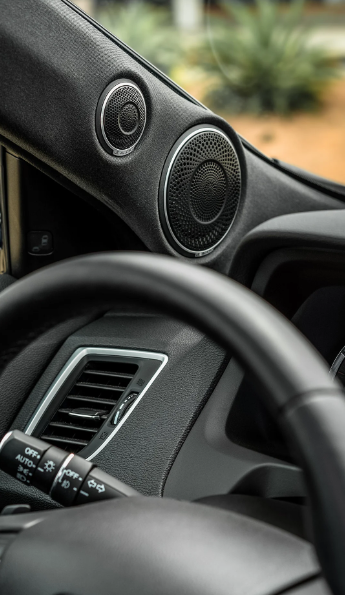
When upgrading a car’s audio system, many people focus on new speakers, a subwoofer, or even a new head unit. However, one key component that often gets overlooked is the amplifier. While factory car stereos come with built-in amplifiers, these are typically underpowered, leaving your system lacking in both volume and sound quality. So, do you really need an amplifier in your car audio system? Let’s explore the role of amplifiers and how they can elevate your listening experience.
What Does an Amplifier Do?
An amplifier’s primary function is to boost the low-level audio signals from your head unit (stereo) and send them to your speakers at higher power levels. This increased power allows your speakers to play louder and with greater clarity, even at higher volumes.
Without an amplifier, your car’s speakers might not reach their full potential, especially if they are aftermarket models designed for higher power output. Stock stereo systems typically use small, built-in amplifiers that are not powerful enough to drive high-performance speakers. This is where an external amplifier comes in.
Why Your Car Audio System Might Need an Amplifier
Improved Sound Quality
One of the biggest advantages of adding an amplifier is the improvement in sound quality. Factory stereos often distort sound at high volumes because they lack the power to drive speakers efficiently. An external amplifier ensures that your speakers receive enough power to reproduce sound accurately, minimizing distortion and allowing for a clearer, crisper listening experience.
Amplifiers also provide better control over various sound frequencies, making bass deeper and highs more defined. Whether you’re listening to classical music or heavy metal, an amplifier enhances the overall audio experience by making every note stand out.
Louder and Clearer Sound
If you enjoy listening to your music at high volumes, an amplifier is essential. The factory-installed amplifier in most head units can only handle so much power before it starts to distort. This means that when you turn up the volume, the music can start to sound muddy or crackly.
A dedicated amplifier delivers more power to your speakers, allowing you to turn up the volume without losing clarity or precision. This is especially important for audiophiles or anyone who loves to blast their favorite tunes while driving.
Powering Aftermarket Speakers and Subwoofers
If you’ve already upgraded your car’s speakers or added a best shallow mount subwoofer, an amplifier is often necessary to get the best sound. Aftermarket speakers and subwoofers are designed to handle more power than factory-installed models, but they need an amplifier to deliver that power. Without an external amp, you’re likely underutilizing your upgraded components, preventing them from performing at their best.
Subwoofers, in particular, require a significant amount of power to produce those deep, thumping bass notes. A dedicated subwoofer amplifier ensures that your sub receives enough power to hit those low frequencies accurately, giving you that rumbling bass without distortion.
Customizable Sound Control
An external amplifier often comes with built-in controls that allow you to fine-tune your sound system. Features such as gain, bass boost, and frequency filters let you adjust how much power goes to each speaker or subwoofer, optimizing your system for different types of music.
By having this extra layer of customization, you can create the perfect sound balance for your car’s unique acoustics and your personal preferences. Whether you want punchy bass or a smooth, balanced sound, an amplifier gives you the control to shape your audio system’s performance.
Do You Always Need an Amplifier?
While amplifiers offer numerous benefits, they aren’t necessary for every car audio system. If you’re satisfied with your factory speakers and don’t plan to install a subwoofer, your factory stereo’s built-in amplifier may be enough for your needs.
However, if you’re looking to upgrade your sound system, want more power for aftermarket speakers or a subwoofer, or simply want to enjoy music at higher volumes without distortion, an amplifier can make a significant difference.
Types of Car Amplifiers
There are several types of amplifiers to choose from, depending on your needs:
- Mono-channel Amplifiers: Designed for subwoofers, these provide high power to a single speaker for deep bass.
- 2-Channel Amplifiers: Ideal for powering two speakers or bridging to drive a subwoofer.
- 4-Channel Amplifiers: The most versatile option, perfect for powering four speakers or a combination of speakers and a subwoofer.
- 5-Channel Amplifiers: Designed for full-system setups, these can power both your front and rear speakers as well as a subwoofer.
An amplifier plays a crucial role in enhancing your car’s audio system, improving sound quality, volume, and clarity. While not every car will need an external amplifier, it becomes a must-have for anyone looking to power aftermarket speakers, subwoofers, or achieve louder, distortion-free sound. If you’re serious about your music and want to experience high-quality audio on the road, investing in an amplifier can take your car’s sound system to the next level.

